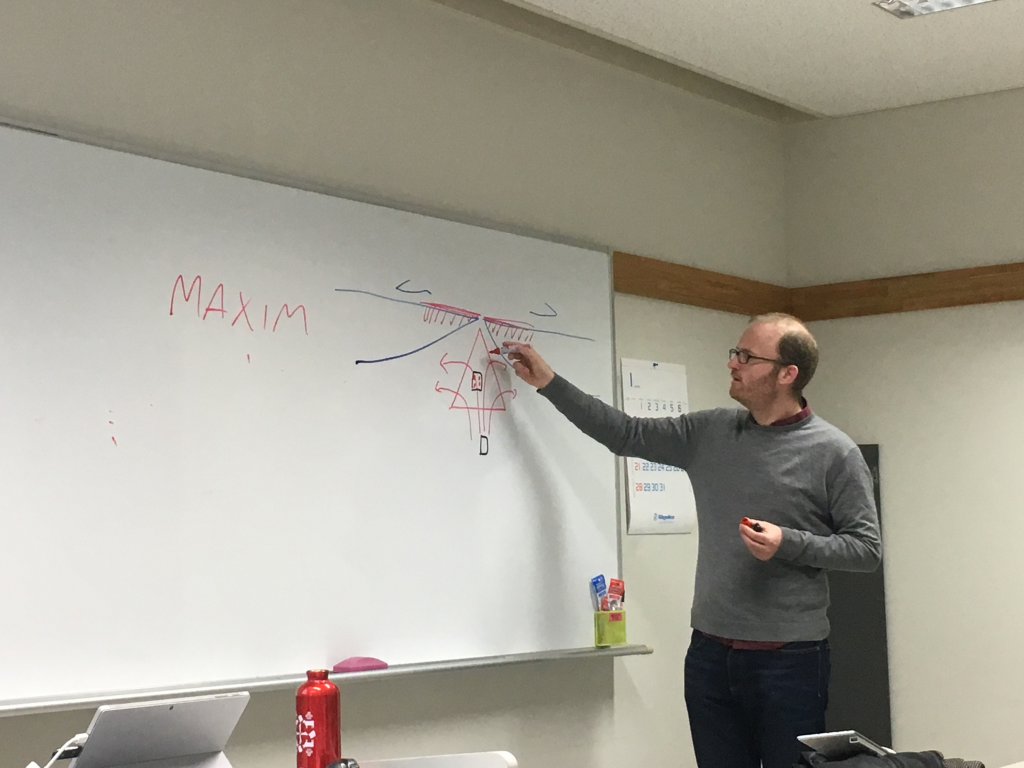MEXT Shin-Gakujutsu “Core-Mantle Coevolution” International Lecture
Dr. Maxim D. Ballmer (ETH, Switzerland) gave an international lecture at the University of Tokyo, School of science (2018/1/17-19). Five students from the department of Earth and Planetary Science and department of Astronomy had the opportunity to learn about geodynamical simulations of mantle convection, with a focus on mantle plumes. The students could apply what they learned during the practical session of the course, during which they simulated thermochemical convection using a Matlab code provided by the professor.

The lecture of Dr. Maxim D. Ballmer gave me a much better understanding of how the models of mantle convection are built. Seismologists imaging the structure of the mantle using seismic tomography rely heavily on models of mantle convection, e.g. to understand what happens to slabs when they penetrate in the lower mantle, or the formation of plumes from large thermochemical piles at the bottom of the Earth’s mantle. The simulations of thermochemical convection that we ran during the practical session of the course gave me a good idea of how important physical parameters (e.g. diffusivity, thermal expansion, density) affect convection, which will really help me to understand more precisely the work of geodynamicists. (Anselme Borgeaud, PhD student in Seismology)
| Date & Time | Jan. 17 (wed) ~ 19 (Fri) 17th: 2nd-4th period / 18th: 2nd-3rd period / 19th: 2nd-4th period 2nd period : 10:25-12:10 3rd period 13:00-14:45 4th period 14:55-16:40 |
| Venue | Room 839 Faculty of Science Bldg.1, The University of Tokyo |
| Lecturer | Dr. Maxim D. Ballmer (ETH Zürich) |
| Title | 固体地球科学特論II |
| Course Objectives | This course will provide the theoretical background of mantle convection on terrestrial planets, teach the basics of numerical modeling of fluid dynamics with solid-Earth applications, and also give examples of how to test numerical-model predictions with geological, geochemical, and geophysical observations. The goal of this course is to understand the objectives and potentials of numerical modeling, as well as to learn how to program a simple isoviscous thermo-mechanical model using finite-difference discretization. Basic knowledge of a programming language is desired but not necessarily required. |
| Schedule |
1. Background on Mantle Convection 2. Comparing model predictions with observation at the example of geodynamic simulations of the mantle plume 3. Thermochemical convection and numerical-model predictions 4. Introduction of the finite difference approximation for the solution of differential equations. Introduction to programming in Matlab 5. Solving the 1D and 2D Poisson equation 6. Solving the momentum and continuity equations 7. Boundary conditions (free-sip, no-slip) and solving the heat equation 8. Developing a coupled thermo-mechanical model for isoviscous mantle convection |
| Contact | A03-1 Kenji Kawai(kenji-at-eps.s.u-tokyo.ac.jp) |




